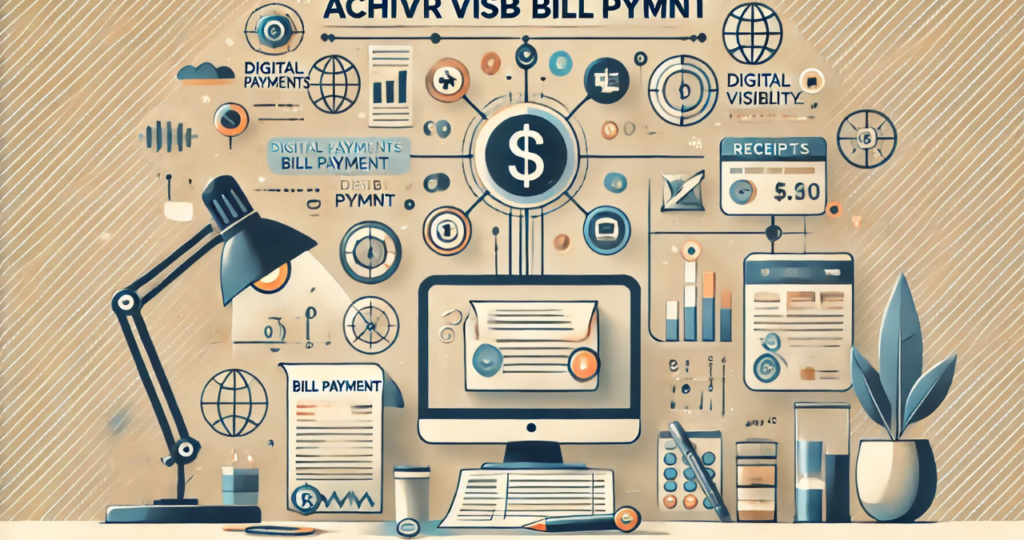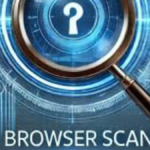Introduction
Bill payments play a crucial role in managing personal finances and maintaining a healthy financial life. Whether you’re paying for utilities, loans, subscriptions, or any other service, ensuring that these payments are clear, visible, and well-documented is essential. Visibility in bill payments not only helps you keep track of your expenses but also ensures that your financial reputation stays intact, especially when dealing with credit scores and potential future loans. However, achieving visible bill payments requires strategy, discipline, and the right tools.
One of the biggest challenges many face is the risk of missed or delayed payments, which can have long-term consequences. With the increasing number of bills that need to be paid regularly, it becomes harder to stay on top of them without a structured system. This is why creating a method that ensures each payment is not only made but also visible and well-tracked is necessary for financial health. In this guide, we’ll explore the importance of visible bill payments, how to make them a priority, and the technologies that can help streamline this process.
The Significance of Visible Bill Payment
How Visible Payments Impact Your Credit Score and Financial Reputation
Visible bill payments can significantly influence your credit score and financial reputation. Credit bureaus rely on bill payments, particularly for loans, utilities, and credit cards, to assess your financial reliability. Timely and visible payments help create a positive payment history, which is reflected in your credit score. This, in turn, affects your ability to secure future loans, credit cards, or even rent agreements. A visible record of payments is proof that you can handle your financial obligations, making you a more attractive candidate for lenders.
On the other hand, missed or invisible payments can damage your credit score. Many people are unaware that failing to make a payment or not properly documenting it could result in late fees, penalties, or worse, a mark on your credit report. Even a single late payment can have a lasting negative effect. Therefore, making sure that all your bill payments are visible, timely, and well-documented is vital in maintaining a solid financial standing.
The Role of Transparency in Personal Finance Management
Transparency is a core element of successful personal finance management. By ensuring that your payments are visible, you maintain a level of control over your finances. Visible payments allow you to have a clear understanding of your financial situation, making it easier to spot areas where you can save, cut costs, or improve your budgeting. With clear visibility into your expenses, you are better equipped to make informed decisions about your money.
Moreover, keeping track of visible payments also helps in case you need to dispute any charges or seek refunds. For example, if you’ve made a payment and it’s not recorded or visible in the biller’s system, you have proof of payment to support your claim. Without such visibility, disputes can become complicated, leading to unnecessary stress and potentially financial loss.
Strategies for Achieving Visible Bill Payment Success
Setting Up Alerts and Reminders
One of the most effective ways to ensure your bill payments are visible and made on time is by setting up reminders and alerts. Bill payment reminders help you stay on top of deadlines and avoid the stress of last-minute payments. Many apps, such as Mint, YNAB (You Need A Budget), or your bank’s mobile app, allow you to set up alerts that remind you of upcoming payments. These alerts can be sent via email, text, or app notifications, making it easy to track and manage your bills.
For those who have multiple payments every month, creating a system where each bill is tracked by due dates and payment amounts can significantly reduce the chances of missed payments. You can also sync your reminders with your digital calendar, ensuring that nothing slips through the cracks. Automated payment systems can also be set to make regular payments automatically, ensuring no payment goes unnoticed.
Utilizing Online Payment Platforms
The digital age has brought about numerous online payment platforms that make paying bills simpler and more visible. Using services like PayPal, Google Pay, or direct banking apps, you can pay bills online while keeping a digital receipt for each transaction. These platforms not only make paying bills easier but also help you maintain a clear record of each transaction. You can easily review past payments, confirm when a payment was made, and check for any discrepancies.
Additionally, these platforms offer additional features, such as setting up recurring payments for subscriptions or loans. This helps ensure that payments are made consistently, reducing the chances of missed or delayed bills. Furthermore, many online payment platforms automatically send a confirmation receipt after each payment, ensuring that the payment is visible in your records.
Keeping Records and Documentation
Keeping an organized record of all bill payments is crucial for maintaining visibility and accountability. Whether you prefer digital records or physical documentation, maintaining a system that tracks each payment is essential for your financial peace of mind. For digital records, services like Google Drive, Dropbox, or a dedicated financial management app allow you to store your payment receipts and documents in a secure, easy-to-access location. These records can also be used in case of disputes, offering proof of timely payments and ensuring you have access to all payment history.
For those who prefer paper records, maintaining a binder or filing system that includes printed receipts, statements, and any relevant correspondence will serve as proof that payments have been made. Regularly updating and reviewing your records will help prevent errors and ensure that all bills are accounted for. A well-organized record-keeping system gives you visibility over your finances and makes it easier to track your payments.
Communicating with Service Providers
In cases where there may be a discrepancy with your bill payment, it’s essential to communicate directly with the service provider. If you notice that a payment hasn’t been processed or reflected in your account, contact the biller immediately to clarify the situation. Most service providers offer customer service support through phone, email, or online chat, making it easy to reach out. Keep a log of all communications and any reference numbers for future reference.
Additionally, regular communication with service providers can help you stay informed about any changes in billing cycles or potential issues that might arise. Ensuring that both parties (you and the service provider) are on the same page is critical in preventing miscommunications that could lead to missed payments or errors in billing records.
Avoiding Common Pitfalls in Bill Payments
Late Payments and Their Consequences
Late payments are one of the most common pitfalls when it comes to managing bills. Not only do late payments result in fines and penalties, but they can also negatively affect your credit score. Most service providers charge late fees when payments aren’t made on time, which adds to your expenses. If you repeatedly miss payments, service providers may cut off your services or report your late payments to credit bureaus, which can impact your ability to get loans or credit in the future.
Avoiding late payments requires staying organized and being proactive. Set up alerts, track your due dates, and ensure that you have enough funds in your account to cover your bills on time. This simple strategy can help you avoid the negative consequences of late payments and maintain control over your finances.
Insufficient Funds and Payment Failures
Another common pitfall is insufficient funds, which can lead to payment failures and overdraft fees. Ensure that you regularly monitor your bank account balance and schedule payments when you have enough funds available. Some banks and payment platforms also offer alerts when your account balance is low, helping you avoid the embarrassment and financial strain of a failed payment.
If you find that you’re consistently running low on funds, it might be time to reassess your budget or explore options for adjusting your payment schedule to better align with your cash flow. Budgeting apps can help you track income and expenses, ensuring you always have enough to cover your bills.
Miscommunication with Billers
Miscommunication with service providers can lead to confusion about bill payments, missed deadlines, and even overcharges. Ensure that you have clear, documented communication with each service provider. If you’re making a one-time payment, be sure to confirm it is received. If there are recurring charges, regularly check your statements to ensure you’re being billed correctly. Document any disputes or issues and work to resolve them quickly to prevent misunderstandings from escalating.
The Role of Technology in Managing Bill Payments
Payment Automation Tools
Payment automation tools have revolutionized how people manage their bills. Automation not only ensures timely payments but also reduces the risk of human error. You can set up recurring payments for utilities, loans, subscriptions, and credit cards to run automatically each month. This removes the stress of remembering due dates and ensures that payments are always visible and documented. Automated tools also help with organizing your finances, as they generate detailed reports that can be reviewed at any time.
Tracking and Analyzing Payments
The power of technology lies in its ability to track and analyze payment history. Many apps and software tools allow you to link your bank accounts and credit cards, enabling you to view a comprehensive history of all your payments. This not only provides insight into your spending habits but also makes it easier to identify any discrepancies. With regular financial checkups, you can ensure that every payment is visible and accounted for.
Protecting Personal Data in Digital Transactions
While digital platforms offer convenience, they also raise concerns about privacy and security. To protect your personal information, use secure payment methods and ensure that the websites you use for transactions are encrypted with HTTPS. Be cautious when providing sensitive details online and avoid making payments over public Wi-Fi. Setting up strong, unique passwords for payment platforms and enabling two-factor authentication can provide an added layer of security for your financial information.
Conclusion
Achieving visible bill payment success is essential for both financial management and maintaining a good credit score. By utilizing digital tools, setting reminders, and keeping organized records, you can ensure that every payment is visible, timely, and accounted for. Clear communication with service providers and taking proactive steps to avoid common pitfalls can help you stay on top of your financial obligations and avoid costly mistakes. With the right strategies in place, you’ll be able to take control of your finances and maintain a positive financial reputation.
FAQs
Q1: What is meant by “visible bill payment”?
Visible bill payments refer to payments that are clearly documented, tracked, and reflected in both the payer’s and the biller’s records.
Q2: How can I avoid missing bill payments?
Set up alerts, use payment automation, and keep a detailed calendar or financial tracker to stay on top of bill deadlines.
Q3: What happens if a payment is delayed or not visible to the biller?
Late or unrecorded payments may incur fees, negatively impact your credit score, or lead to service interruptions.
Q4: Are online bill payments secure?
Yes, provided you use trusted platforms with strong security measures such as encryption and two-factor authentication.
Q5: Can I set up automatic payments for all my bills?
Yes, many services offer the option to set up automatic payments, ensuring regular and timely bill payments.
Q6: How do I resolve a billing dispute with a service provider?
Communicate clearly with the provider, keep a log of all interactions, and provide documentation to support your case.
Q7: What should I do if my payment is not reflected on my account immediately?
Contact the service provider to confirm receipt, and ensure you have a record of the transaction for reference.
You May Also Read:https://buzzinfodaily.com/autozone-auto-parts-near-me/


